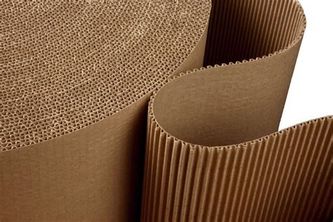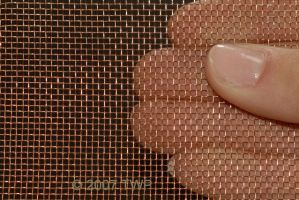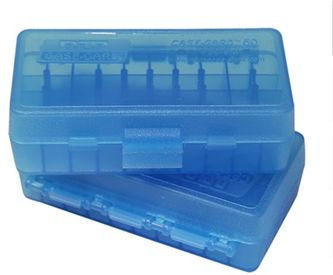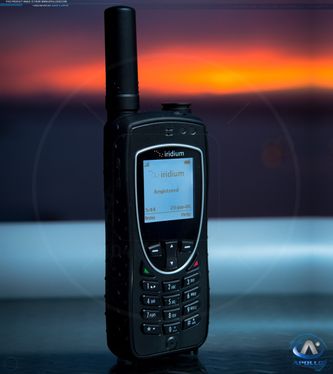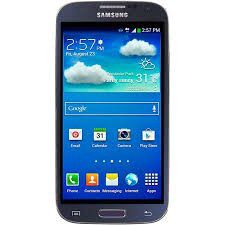EMP Protection for batteries, radios, and Steri-pen for water
Read description box on this video for specifics on the mtm boxes.
What is protecting your cell phone now?
If you want to try this method of keeping your cell phone, then remember to do the ring test: turn it on, place it inside your EMP container, and then phone it with another phone. Your phone should NOT ring! If your phone rings, play with the insulation inside until your phone does not ring. My phone has a plastic case and a plastic coating over the screen. Only the camera lens is exposed, so the plastic inserts work well!
A better method to store electronics against EMP
Aluminum can get punctured easily. Tin or steel containers with tight sealing lids are the best option. Cover the inside of these containers with insulation such as corrugated cardboard or plastic. Again, you can apply the cell phone test to see if you have a proper seal with the insulating material.
Selecting Your All-Metal Containers
You might as well go for the largest "Bon Chien Food Storage" dog food can for your all-metal container.
The lids fit snugly, and there is a protruding groove which would divert any EMP waves from getting under the lid.
As well, the handles do not leave holes through which EMP waves could enter and destroy your stored electronics.
These containers are sturdy, made from 100% recycled steel.
They are available in most places, and even discount stores, but if you are having trouble finding them, here is the contact information for the company, which is based in South Carolina:
1-800-HI-HARRY
Line these steel containers with cardboard and get your electronics and batteries safely out of the way. If you want double protection, put electronics in their own cardboard boxes, and put these inside the cardboard-lined container.
Dimensions: The largest "Bon Chien" container measures 19.5 inches tall by 13.25 inch diameter. Made of 100% recycled steel. (See picture below).
Check that all handles do not create punctures in your container. Even a pin-prick size will allow EMP waves to destroy your precious electronics. IDEA: Store a smaller wattage table lamp for when electricity is re-established in your area. Store electronic cables also, but detach them from your devices.
How to Insulate All-Metal Containers
All-metal containers are great for protecting against an EMP because lids can be opened to allow for changes to what is stored safely, such as replacing expired batteries.
Insulating these containers becomes important, and this is what really works well:
This cardboard comes in large rolls, is sold by the yard or metre, and can be found in shipping stores, such as FedEx stores.
This cardboard is pliable, easily wrapping around round containers or getting right into corners of squared containers.
As it is thinner, you may wish to double up on the insulating layer, by interlocking the ridges.
HOW TO LINE CONTAINERS:
1. Line the sides first, in one continuous piece. Place ridges inward. If you are doing a double lining, make the ridges face each other, interlocking between each ridge.
2. Line the bottom next, again ridges upwards, and interlocking if you are double lining the bottom. Make sure that no metal shows through between the side and the bottom of your container.
3. Place electronics inside.
4. Lock in the top layer(s) under the rim of your metal container.
Try to make the top layer(s) of cardboard fit snugly under the rim of your container, so that everything underneath is insulated. Then place the lid in place and you are done!
What Is an Electro-Magnetic Pulse (EMP)?
This close-knit copper mesh would stop an EMP blast from destroying your batteries and electronics.
An electro-magnetic pulse is a release of energy which travels outwards from a solar flare or from a nuclear explosion.
A solar EMP will not hurt humans & animals, but it will destroy electronics, including making batteries use up their power in a moment and go dead.
A man-made EMP (nuclear or non-nuclear EMP energy weapon) can incapacitate us, or kill us (literally cook us), as well as destroy our electronics. See https://www.dailymail.co.uk/news/article-8957019/China-used-secret-microwave-pulse-weapon-Indian-soldiers.html
Our first thought should be to protect our electronics so that we are able to use our communication and illumination gear.
We have to encase batteries and electronics so that the energy blast from an EMP does not touch them.
The Faraday cage is named after the scientist who designed this casing.
He used copper wire mesh, but there are other options, including simple aluminum foil.
Why protect your electronics from an EMP?
It will bring peace of mind to keep in touch with a loved one who is outside via walkie-talkies, or to get news as soon as it is available via a functioning wind-up radio.
Decide what you and your family, or neighbors, will need or appreciate the most.
A great way to protect AA and AAA Batteries
The box pictured here is made by MTM to hold 50 cartridges (bullets). The dividers are sealed so that if one battery leaks, the others do not receive damage.
These boxes are USA made. The . The largest size holds AA batteries (R-50 Series Magnum Rifle); and the middle size holds AAA batteries (RL-50 Rifle Large).
These MTM boxes are sold where hunting supplies are sold, such as Bass Pro Shops or Cabelas.
The website is: www.mtmcase-gard.com
Hint: Take a AA and AAA battery with you when you go shopping to make sure you get the size box you need.
The high-top lids of the 50 Series means that you can add small flashlights, radiation detectors, transistor radios, or small Midland walkie-talkies over the batteries. (Cut some thin packaging plastic to separate these from your batteries below).
Batteries today are made to last for ten years, so storing them properly is important.
If you place these MTM boxes of batteries inside a tin bread box they are EMP proof.
If you line the inside of the bread box and its lid with cardboard, then uncovered electronics will also be EMP proof.
The beauty of the tin bread box? If opened with care, you will be able to re-open these containers easily to change the protected electronics inside and still maintain the EMP protection!
A simple metal bread box has no handles, hinges or holes which would allow EMP waves to penetrate.
Remember to test the box with your cell phone before you buy it! I put my cell phone inside an MTM box inside a tin bread box, and my cell phone did not ring!
A List of Electronics Worth Protecting from EMP
Satellite phones are off-grid phones. Top company names are Garmin and Irridium. These phones will need to be EMP protected when not in use.
As you begin to read and learn about what you will need (ideally) to get through life after the 3 Days of Darkness (which will more than likely involve an EMP from a very large solar flare (see: The Sun ) you can slowly begin to protect electronic items now.
When buying extras for storage against EMP, try not to buy important electronics which are made in China, as they are inferior products which will more than likely break down quickly.
Here is a list to help you. Think of what comforts you now, and what you will need to procure the basics to survival:
1. Portable music player and tapes or CD's. Also an extra flash drive with these songs copied for downloading.
2. Portable DVD player and favourite DVD's.
3. Battery charger and re-chargeable batteries. (Check the types of batteries used on mobility assistance items such as an electronic chair or scooter).
4. Radios: Wind-up, battery-operated, and/or plug in. Protect at least two different kinds.
5. Walkie-Talkies: Keep a couple on hand to practise with the family, or just one to listen to the NOAA Weather Station reports, and then protect the rest! Make sure your radios and walkie-talkies have the NOAA weather station. (This is pronounced like the name Noah).
PLEASE NOTE: When a NOAA weather report gives a wind direction, this is the source (the origin) from which the wind is blowing.
Keep track of wind patterns in your area from month to month. Winds carry smoke, radiation, etc, so it is important to know wind directions. Make sure you have access to NOAA reports.
6. Flashlights: Wind-up, battery-operated, and/or with plug-in re-charging port. Protect all plug-in re-charging ports also.
7. A couple of power surge protectors (make sure at least one can handle a large appliance or two, just in case).
8. An electric fan or two to help survive extreme heat.
9. A small electronic spot heater or two.
10. Cell phone and/or satellite phone: Once cell towers and receiver stations are repaired, you will want to call friends and family.
Exchange emergency phone numbers now, and store these also on paper with your phone (just in case).
Remember to keep up the annual payment -- write it on your calendar!
Think texting instead of calling: Texting will be cheaper, allowing you more communications, and people can read messages easily and even re-read them for comfort.
11. Basic power tools to make your survival easier: a drill, a nail gun, an electronic well pump, an electronic winch.
12. Extension cords, and power cords (just in case...)
13. Hair dryer (could be a life-saver in extreme cold, also a useful tool)
14. A few lamps, and extra matching light bulbs.
15. Battery-operated candles with the soothing flicker feature. What a great night light for kids!
16. A laptop, in its box, cord inside. An i-pad is also a great idea, and is smaller!
Or if you have the space, protect a computer tower, keyboard, monitor, and mouse (and all applicable cords and power surge bar).
17. Flash drives (memory sticks) with hard drive back up of all files, especially photos and medical records, and other important documents; also new flash drives.
18. Digital camera, video camera, and all wires and chargers, external batteries. Always package batteries separately, in case they leak while stored.
19. An old replacement phone and plug-in wire for your home, if you have a landline. And that old answering machine also!
20. A tape recorder or memo recorder, with plug. Store extra batteries separately in case of leakage.
21. Night lights, safety lights, security perimeter lights.
22. Coffee grinder. (It can grind more than coffee beans!)
23. One or two inverters, to allow you to use solar power with your electronics.
24. Solar panels (minimum of 4) to plug in series for faster collection of electrical charge. Get panel size that you can protect against EMP, as well as easily carry and set up by yourself if necessary.
Buy from local manufacturers so that you can get maximum technical assistance for set-up knowledge and also product support/replacement parts. Do a google search for solar panels made in your country.
25. Battery(ies) for solar panels:While stored, if the battery(ies) for storing the solar charges are not plugged in or charging , they will be fine against an EMP.
When periodically charging batteries, (such as during periodic storage maintenance), try to charge them one at a time so that they are not all exposed to EMP damage at once.
What is the battery with the longest shelf-life? Rolls Royce. (It is also the most expensive).
IMPORTANT: YOU CAN ASK COMPANIES IF THEY MAKE EMP-HARDENED ELECTRONICS!
The company Sol-Ark (in Florida, USA) sells an EMP-hardened (protected) electric generator. It is worth it to go to this youtube video and watch how one person is setting up his generator.
See this link: https://youtu.be/r1qJoxDvzOo
HOW TO GET HOT WATER WITHOUT ELECTRICITY:
See how to bend a copper pipe (using frozen water) [FIRST LINK BELOW] so that you can heat hot water easily and in large quantities (such as for baths) [SECOND LINK BELOW].
EMP Protection Video 1
Use a cardboard box and aluminum foil to protect your batteries and electronics. Make these inexpensive and effective Faraday Boxes for yourself!
Aluminum Foil EMP Protection for Larger Electronics
Here you can see how to join two or more pieces of aluminum foil to wrap a box of larger electronics like a laptop, a family set of walkie-talkies, a larger wind-up radio, etc. If you prefer, you can also purchase barbecue-sized rolls of aluminum, which are substantially wider.
All seams need at least two folds to ensure that EMP waves will not penetrate. Please see Video 1 for how to do this. JMJ
Post-EMP Emergency Phone Protection
Talk with your family and friends and get prepared to have communications happening as soon as they are re-established. Do not forget to update your phone plan annually. Write the expiry date on the outside of the aluminum-covered box. And pack charging cords which allow for charging from different sources. The hope of being able to get in touch once communications are re-established will keep us motivated to survive difficult times. Also, keep a paper copy of all names and phone numbers, as back up, just in case you are not able to retrieve them from your emergency phone. Watch Video 1 below to see how to seal the seams so as to block/stop EMP damage. JMJ
The Cell Phone Challenge
You may have heard that your dishwasher, perhaps your microwave oven (unplugged) or even your clothes dryer make good storage for electronics against EMP, but THIS IS NOT TRUE!
To be EMP proof, the storage container must have no cracks or even pin pricks through which electro-magnetic waves can get in.
To test your storage container, turn on a cell phone, put the ringer volume on high, and put it in. Close or seal up your container as you would for EMP protection. Then phone your cell number using another telephone.
Does your cell phone's ring sound get activated? If you can hear your cell phone ringing, then your container is NOT EMP PROOF, and your electronics will get burned out (destroyed). Watch the two videos above on how to have inexpensive EMP protection for your home electronics.

